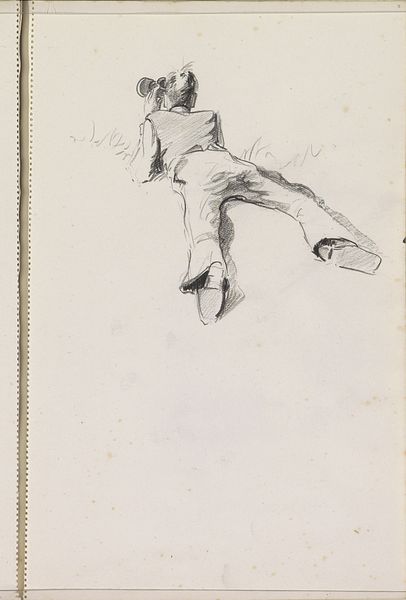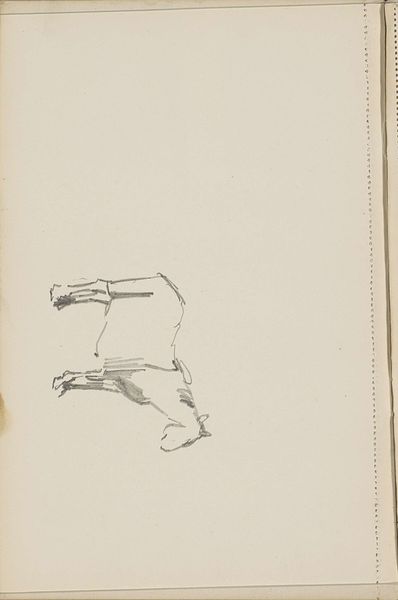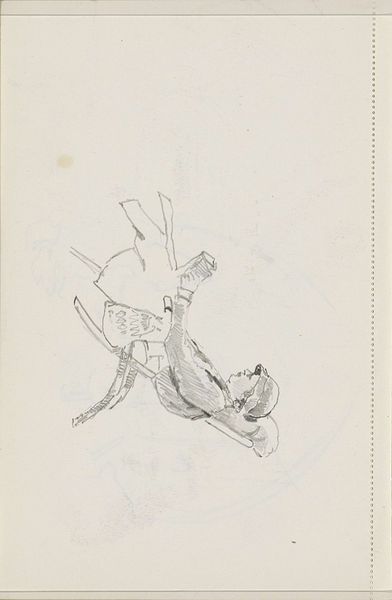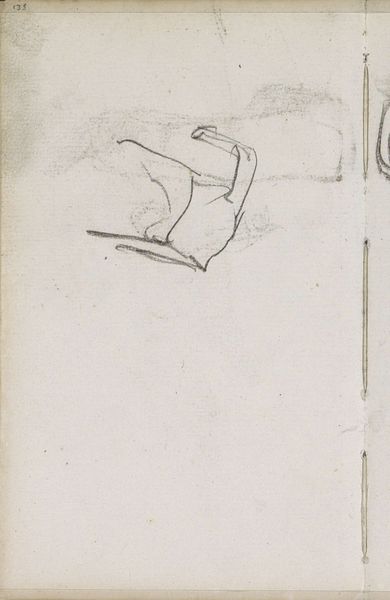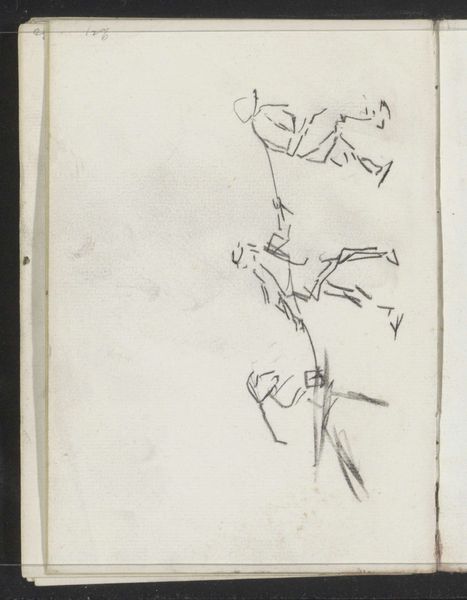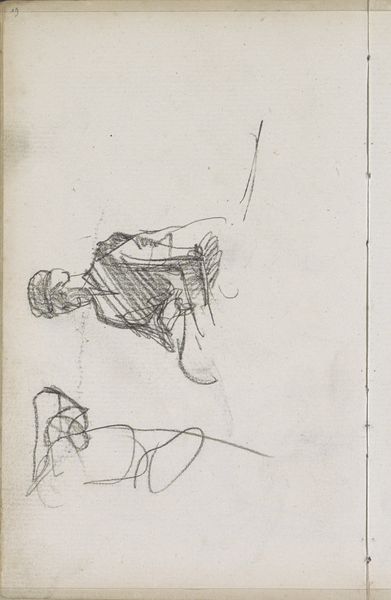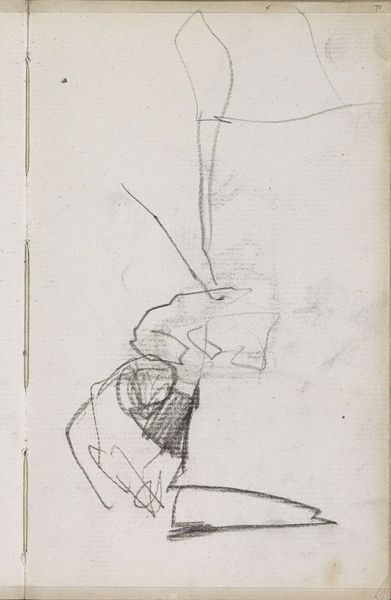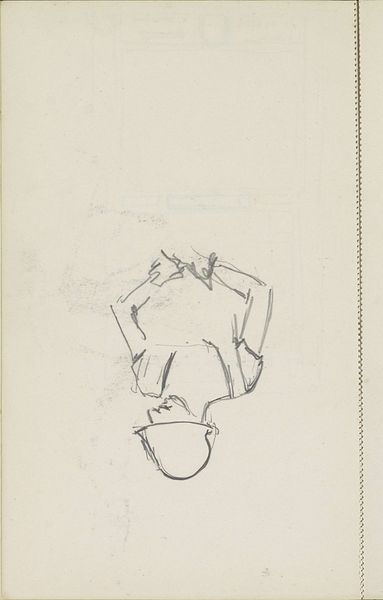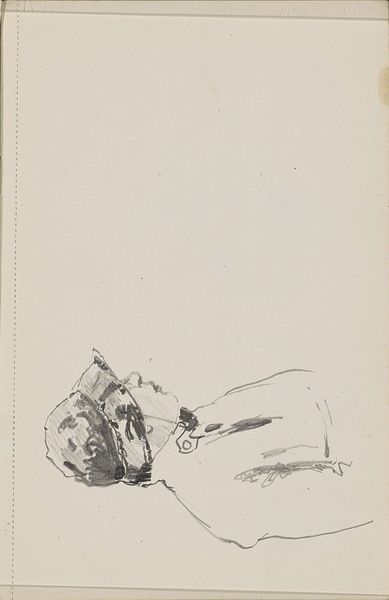
drawing, pencil
#
portrait
#
drawing
#
amateur sketch
#
light pencil work
#
dutch-golden-age
#
pen sketch
#
incomplete sketchy
#
landscape
#
personal sketchbook
#
idea generation sketch
#
pen-ink sketch
#
pencil
#
sketchbook drawing
#
sketchbook art
#
realism
#
initial sketch
Copyright: Rijks Museum: Open Domain
Curator: This drawing is by Willem Witsen, titled "Man met spade, mogelijk een heiwerker," placing it around 1884-1887. It's currently held in the Rijksmuseum. Editor: My first thought is one of stark simplicity, but that somehow elevates this working man’s figure. The light pencil work on the grey page captures him mid-motion. It’s quiet and almost ghostly. Curator: Yes, the ethereal quality is interesting when you consider the symbolism of the spade. A tool of labor, yes, but also connected with land, with ownership, and perhaps the artist is interested in exploring the deeper ties of working folk. Editor: Absolutely. Looking at this from a social perspective, one considers how often laborers were unseen. Witsen acknowledges their backbreaking work and existence within this changing urban landscape during industrial expansion. Is there something about a cultural awareness here? Curator: Precisely. A visual record of a class often ignored, yet foundational to the culture itself. His slightly stooped pose, frozen here on the page, tells so much of repetitive work cycles—this symbol becomes charged. I would further suggest the artist attempts to render the symbol, not just the sitter. Editor: You're right. Even this drawing itself challenges ideas of high art, which often prioritized the leisure class in portraiture. It becomes an early assertion that ordinary people also matter as worthy subjects of art, prompting viewers to examine class hierarchies. Curator: Moreover, by emphasizing an element so associated with creation, that simple spade implies themes of struggle and accomplishment across societal and perhaps spiritual strata. It moves beyond realism into something larger. Editor: Right—the ambiguity around this working figure opens up multiple readings concerning exploitation and identity at this crucial point in industrial history, and prompts an inquiry regarding social equity then and now. Curator: And while modest in scale, it represents significant visual language around manual workers during rapid Dutch urban development. This figure, as a symbol, would linger long after the era faded. Editor: So much can emerge when looking beyond initial impressions and into the deeper historical narratives. Thank you for making this sketch come alive with all of these cultural dimensions!
Comments
No comments
Be the first to comment and join the conversation on the ultimate creative platform.
